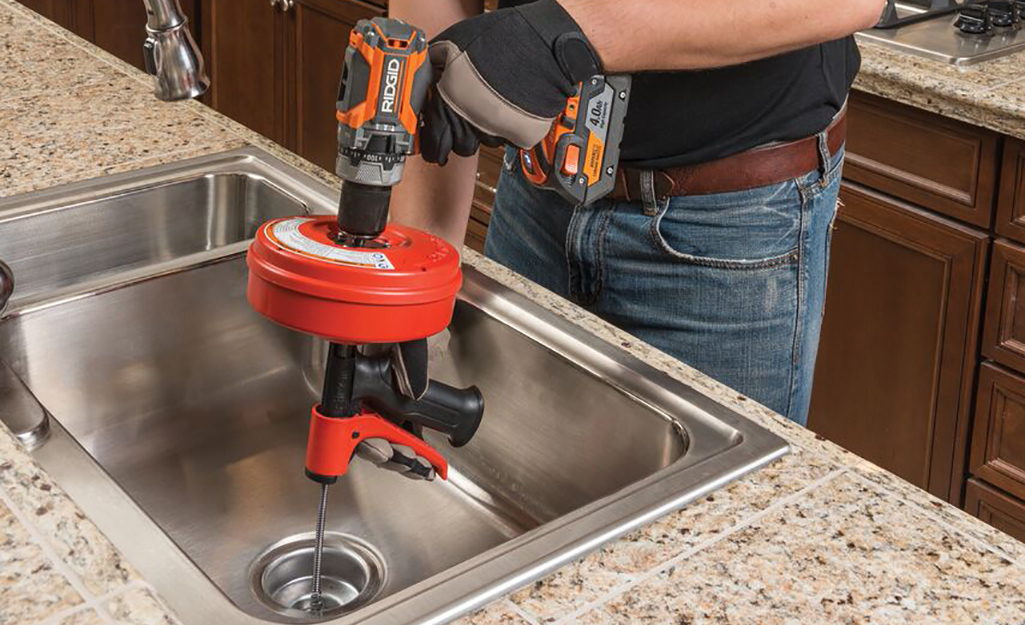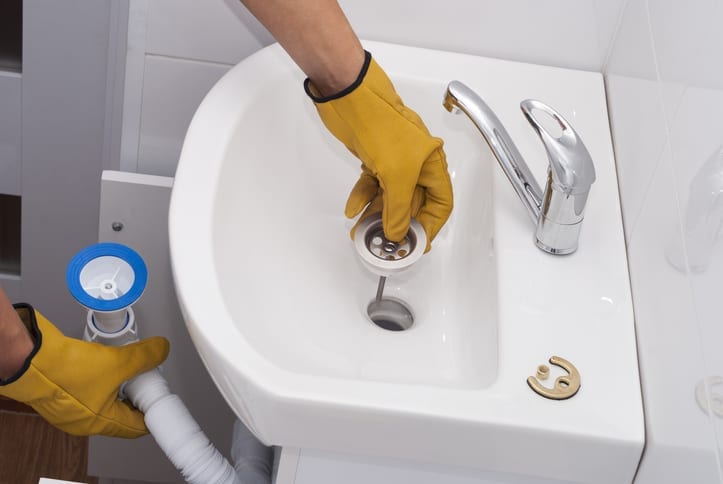This Page
They are making a few good points on Repairing Common Household Plumbing Issues as a whole in this great article on the next paragraphs.

Obstructed cooking area sinks are one of one of the most usual water drainage concerns house owners deal with. And also what's more, it's a very awkward as well as unpleasant view. Picture mosting likely to the sink to do your meals and figuring out that the drain is clogged as well as water can not flow down quickly.
Most clogged up drainages are triggered by food debris, fat, soap, and also oil bits. They clog the sink as well as make it hard for water to drop the drainpipe swiftly. While it is alluring to put a call through to the plumbings, there are a couple of DIY hacks you might attempt first prior to making that call.
In this short article, we will certainly be looking at five basic actions you can take to release your cooking area sink from clogs and save you from the discomfort and shame of managing a clogged cooking area sink.
1. Usage Boiling Water
When confronted with a clogged sink, the first thing you should try is to put boiling water down the drainpipe. That has to do with the most uncomplicated treatment to clogged sinks and also drainages. Boiling water aids reduce the effects of the fragments as well as particles causing the clog, particularly if it's oil, grease, or soap bits, and also in most cases, it can flush it all down, and your sink will certainly be back to normal.
Do not attempt this technique if you have plastic pipelines (PVC) because warm water might thaw the lines and create more damage. If you use plastic pipelines, you might want to stay with utilizing a bettor to obtain debris out.
Using this technique, switch on the faucet to see just how water flows after pouring hot water down the drain. If the obstruction lingers, attempt the process again. The obstruction can be more persistent in some instances as well as require even more than simply boiling water.
2. Possibly it's the Garbage Disposal
In many cases, the blockage may be because of a clog in the disposal. Switching on the disposal ought to remove the blockage, yet it could mean that food fragments or other compounds are stuck in between the blades if that is unsuccessful. You can try to unblock it by transforming the blades manually in a proposal to release it. Please make certain not to stick your hands in the blades; they're sharp. Usage pliers rather.
If this does not function, you can explore the following choice to unclog your kitchen area sink.
3. Attempt a Plunger
You can try making use of a bettor if the issue is not from the waste disposal. Plungers are basic residence devices for this event, and they can can be found in helpful if you utilize them correctly. A flat-bottomed bettor is most appropriate for this, yet you can use what you have is a toilet plunger.
Adhere to the list below straightforward actions to utilize the bettor successfully:
Secure the drain with a rag and also load the sink with some hot water
Place the bettor ready over the drainpipe as well as start diving
Check to see if the water runs openly after a few dives
Repeat the process up until the drainage is complimentary
4. Baking Soda and Vinegar
In contrast to using any form of chemicals or bleach, this approach is more secure and also not unsafe to you or your sink. Sodium bicarbonate and vinegar are daily residence products made use of for several other things, and also they can do the trick to your kitchen area sink.
Firstly, get rid of any kind of water that is left in the sink with a mug.
Then pour a good quantity of cooking soda down the drain.
Pour in one mug of vinegar.
Seal the drain opening and also permit it to go for some minutes.
Pour hot water down the drain to dissolve various other persistent deposit as well as fragments.
Following this simple approach can work, as well as you can have your kitchen sink back. Repeat the procedure as long as you consider required to free the sink of this debris entirely.
5. Use a Hanger
This technique is effective and also ingenious, specifically if you know as well as maybe see what's triggering the clog. Occasionally, the obstruction could be triggered by hair, fashion jewelry, or big chunks of food particles. Utilizing a cable towel wall mount or a plumber's serpent if you have one can do the technique. All you need do is straighten out the wall mount to drop the drain while you carefully pick out the particles creating the obstruction.
Run warm water down the tubes after this to see exactly how effective you were.
Final Words
Attempting these couple of tricks could save you the costs of having a plumber inspect it. However in most cases, a plumber is what we require. In cases where you find it hard to unblock the sink even after trying all these methods, it might be time to leave it to the specialists.
Call specialist plumbing firms to fix your drainage troubles as well as various other various household plumbing requirements.
Clogged cooking area sinks are one of the most typical water drainage problems house owners encounter. Visualize going to the sink to do your meals and discovering out that the drainpipe is obstructed and water can not stream down quickly.
They clog the sink and make it hard for water to go down the drain rapidly. When encountered with a clogged sink, the very first thing you need to attempt is to pour boiling water down the drain. Boiling water assists counteract the fragments and also particles creating the obstruction, specifically if it's oil, soap, or grease bits, as well as in numerous cases, it can flush it all down, and also your sink will certainly be back to typical.
How to Unclog a Kitchen Sink
Take the Plunge
Start your efforts by plunging. Use a plunger with a large rubber bell and a sturdy handle. Before getting to work on the drain, clamp the drain line to the dishwasher. If you don t close the line, plunging could force dirty water into the dishwasher.
Fill the sink with several inches of water. This ensures a good seal over the drain.
If you have a double sink, plug the other drain with a wet rag or strainer.
Insert the plunger at an angle, making sure water, not air, fills the bell.
Plunge forcefully several times. Pop off the plunger.
Repeat plunging and popping several times until the water drains.Clean the Trap
The P-trap is the curved pipe under the sink. The trap arm is the straight pipe that attaches to the P-trap and runs to the drain stub-out on the wall. Grease and debris can block this section of pipe. Here s how to unclog a kitchen sink by cleaning out the trap:
Remove as much standing water from the sink as possible.
Place a bucket under the pipe to catch the water as it drains.
Unscrew the slip nuts at both ends of the P-trap. Use slip-joint pliers and work carefully to avoid damaging the pipes or fasteners.
If you find a clog, remove it. Reassemble the trap.
If the P-trap isn t clogged, remove the trap arm and look for clogs there. Run the tip of a screwdriver into the drain stub-out to fetch nearby gunk.Spin the Auger
With the trap disassembled, you re ready to crank the auger down the drain line.
Pull a 12-inch length of cable from the auger and tighten the setscrew.
Insert the auger into the drain line, easing it into the pipe.
Feed the cable into the line until you feel an obstruction. Pull out more cable if you need to.
If you come to a clog, crank and push the cable until you feel it break through. The cable will lose tension when this happens.
Crank counterclockwise to pull out the cable, catching the grime and debris with a rag as the cable retracts.

I have been very fascinated by Common Household Plumbing Issues and I'm hoping you enjoyed my blog posting. Loved our entry? Please share it. Let somebody else locate it. Thanks a lot for your time. Please visit our site back soon.
Need it now? Call.